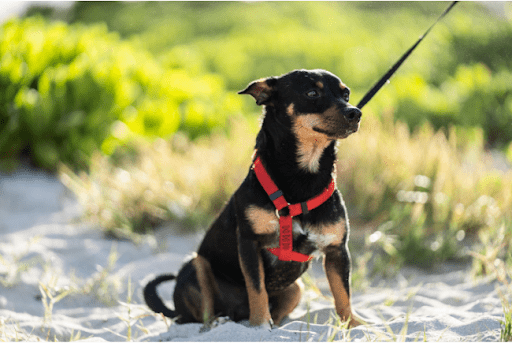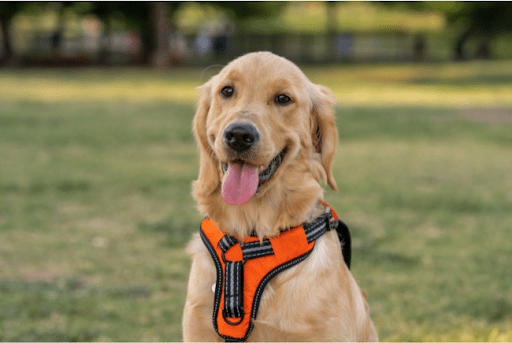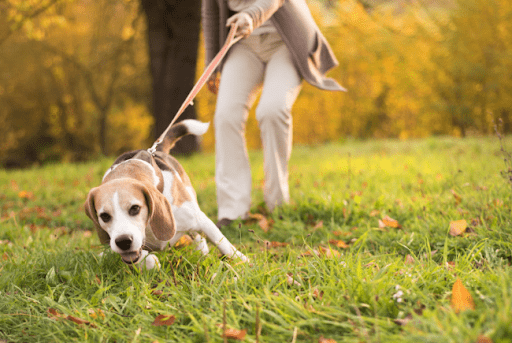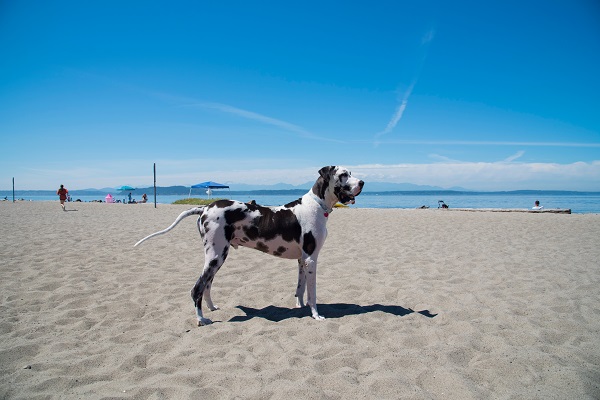Does your dog pull on its leash when walking down the park instead of walking side-by-side with you? The furry fellow must be trying to get rid of the collar, and you can’t entirely blame him! Dog collars put pressure on airways, making walks uncomfortable.
But your evening stroll doesn’t always have to be this way! Harnesses are a great alternative to the traditional collar and leash if you want to control your doggo’s movement without putting physical strain on its throat.
Training a dog to walk with a harness can seem daunting, but not on our watch! This post shares tips for taking your dog for a walk with a harness. So, let’s get started!
Step 1: Choose the Right Harness
Choosing a suitable harness would require you to have the following knowledge:
Determine the Right Type of Harness
It’s self-explanatory that you need a harness to train your dog to walk with one. Various harness designs are available in the market, but they are mainly categorized as over-the-head and step-in.
Which is Better: Over-the-Head or Step-in Harness?
Over-the-head harnesses require dogs to put their heads through the opening. But a step-in harness is better if your furry friend feels uneasy and faces disturbance in wearing an over-the-head. You can then clip it around the neck and body to secure it.
Get the Right Fit
Dogs come in many shapes and sizes. You can’t expect a German Shepherd to wear the same sized harness as a Pomeranian. Moreover, it would help if you considered your pet’s weight when shopping for a harness. Average weight 70-pound Golden Retriever would fit into a different-sized harness compared to an obese 82-pounder.
You must also ensure that the harness fits nicely on your dog. The strapping should fit snugly against the body, stay in place when the dog moves, and prevent him from escaping.
How to Know if the Harness Fits Perfectly?
You can ascertain whether the harness is excessively loose or tight by looking for the following signs:
- Chafing or fur loss near the harness area
- The dog can wriggle loose
- He is adamantly refusing to walk
- The harness’s back section rotates in both directions.
Step 2: Encourage Your Dog to Get Used to Wearing the Harness
Is it intimidating for you to introduce your dog to a harness? Imagine how frightful it would be for dogs to get into one! Here are some tips for getting your dog used to wearing the harness:
- Give the little guy some time to sniff and familiarize themself with the harness.
- Put a treat on or near the harness and let your dog eat off of it.
- Open and close the harness buckle before the furry fellow and let him understand the mechanism.
- If your dog has sensitive skin, start petting him in the areas a week ahead, so he doesn’t
- freak out the first time you put a harness on them.
- Even dogs these days are into technology. Show him videos of other dogs walking with a harness.
- A little encouragement goes a long way- appreciate your doggo each time he makes contact with the gear.
You will receive snaps and barks from your dog during the process, so be mentally prepared. Keep a light hand on your dog, and don’t force the harness on it if you don’t want any more trouble.
Step 3: Time to Go for a Walk
1. Take Him for a Stroll
Once you get your dog in the harness, hold the leash and signal him to start walking. He might initially walk with you but gradually start walking ahead of you.
2. Introduce Verbal Cues
When he approaches the last two or three feet of the leash, you need to give him a verbal cue to slow him down; make sure to deliver the message calmly and clearly.
3. Practice Making a Turn
Practice this a few times, then practice the U-turn. As soon as he exerts pressure on the leash, pull it while turning and walking in the opposite direction. Make sure to give your dog a verbal cue like “turn” when doing so. This way, he will know the keyword the next time you want him to make a turn when walking.
4. Encourage Him with a Treat
Reward the little guy each time he walks by your side and makes a turn at your call.
5. Communicate with Your Dog
Your dog might be hesitant to wear the harness. The key is to master each step before moving on to the next, no matter how much time it takes. If you feel like your dog is stressing at any point, stop! Always acknowledge your dog’s cues so they know they can rely on you. Dog anxiety symptoms can be pretty subtle and simple to ignore.
6. Take Your Time
Last but not least, take your time and let your dog take his time to adjust to the harness. Keep these training sessions short, roughly ten to fifteen minutes, and extend them until your dog can successfully walk with a harness.
Tips to Effortlessly Train Your Dog to Walk With a Harness
Here are some of our top tips for making the process of training your dog to walk with a harness an easy one:
1. Harness Train Him at Home
Dogs have the attention span of a goldfish. One minute, they are walking by your side like a good boy and are chasing a butterfly-like crazy the next. If your dog easily becomes distracted when out for walks, the solution is to harness-train him in his comfortable surroundings, like inside your house.
2. Make Sure He is Properly Fed
You might control your dog in normal circumstances, but his stomach controls him in hunger. If hungry, your dog cannot focus on harness training. So, try to feed him at least half an hour before training time.
3. Have Some Treats Close By
Bribing your dog is the easiest way to motivate him to perform better. You can raise your voice at him for bad behavior, too, but those furry fellows are too cute.
4. Get Anti-Pull Harnesses
Anti-pull harnesses are life savers if your dog is a little “too energetic.” They prevent your dog from running ahead, so walking by your side is their only option.
Enjoy Your Evening Stroll with a Harness-Trained Dog!
To Sum Up
The harness training length relies on your dog’s age, breed, and personality. Nevertheless, following the steps listed in this guide should notice some significant improvements.

 DogExpress
DogExpress





















 in Chandigarh, India.
in Chandigarh, India. 
